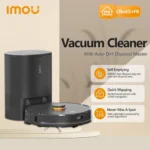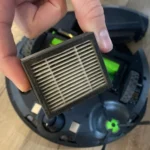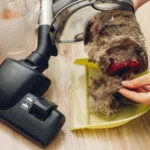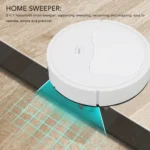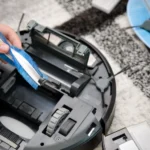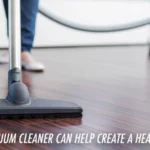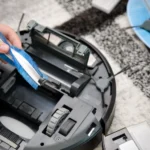Picture this: You just splurged on a brand new smart vacuum cleaner that promised to make cleaning your house a breeze. You eagerly put it to work, but after a few weeks, you notice that it’s not picking up as much debris as it used to, and the air in your home feels noticeably dustier. You might think it’s time to buy a new vacuum, but before you do, let’s talk about the importance of regularly replacing filters in your smart vacuum cleaner. In this article, we’ll explore the reasons why filter replacement is crucial, how often you should do it, the types of filters in smart vacuums, and most importantly, how to replace them. With this knowledge, you’ll be able to keep your vacuum running at peak performance, improve air quality in your home, and even save money in the long run. So let’s dive in!
Why Replace Filters?
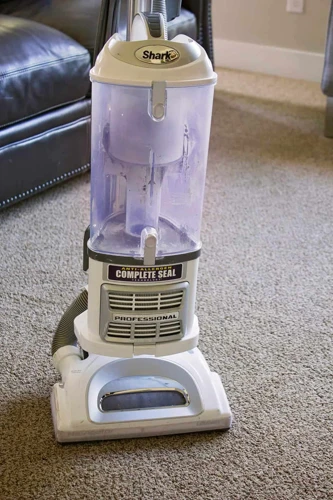
As important as the dustbin in your smart vacuum cleaner is, it would not be as effective without the essential component – filters. Filters are critical since they trap dirt, dust, and debris to keep your floors spotless and your home’s air healthy to breathe. Over time, filters become clogged with dirt and debris, reducing the suction power and filtration efficiency of your smart vacuum. This is why it’s crucial to regularly replace filters. In this section, we’ll explore the reasons why you should take the time to replace the filters in your smart vacuum cleaner. To learn more about filter replacement, check out our Smart Vacuum Filter Replacement Guide.
Improve Filtration Efficiency
Regularly replacing the filters in your smart vacuum cleaner can significantly improve filtration efficiency. Over time, filters can become clogged with dust, pet hair, and other debris, which makes it harder for the vacuum to pick up dirt and dust from the floor. As a result, the vacuum’s suction power may decrease, and it may take longer to clean the same amount of space.
By replacing the filters on a regular basis, you can ensure that your smart vacuum cleaner is working at its optimal level of efficiency. This means that it will be able to pick up more dirt and dust from your floors, which will lead to a cleaner home overall.
There are several different types of filters found in smart vacuum cleaners, such as HEPA filters, pre-filters, and post-filters. Each of these plays a role in the overall filtration process, and it’s essential to keep them clean and functioning correctly to maintain the vacuum’s efficiency.
To prevent filters from becoming clogged and reducing performance, it’s important to clean and maintain them regularly. However, even with regular cleaning, filters will eventually need to be replaced, especially if they become extremely clogged or damaged.
In addition to improving filtration efficiency, regularly replacing filters can also prevent motor damage. A clogged filter can cause the vacuum’s motor to work harder, which can lead to overheating and eventually, motor failure. By replacing the filters at the proper frequency, you can prolong the life of your vacuum cleaner and save yourself from costly repairs.
Regularly replacing filters in your smart vacuum cleaner can have a significant impact on its performance and lifespan. By understanding the different types of filters available, the common mistakes to avoid when replacing them, and implementing some pro tips for efficient replacement, you can ensure your vacuum cleaner operates at its best. You may even consider upgrading to higher quality filters for even better performance.
Prevent Motor Damage
A clogged filter can cause damage to your smart vacuum cleaner’s motor if not replaced regularly. The motor is the main component responsible for the suction power of your vacuum cleaner. When the filter is clogged, the motor has to work harder to maintain the necessary suction power. This extra effort can overheat and damage the motor, and it can also reduce the vacuum’s overall lifespan.
Here are some ways that replacing your smart vacuum cleaner’s filters regularly can prevent motor damage:
- Improved Airflow: When the filter is clean, it allows for proper airflow, which reduces the workload on the motor. This also enables it to achieve and maintain the vacuum’s optimum suction power.
- Reduced Dust and Dirt Buildup: A clogged filter can cause pollutants that are more than the motor can handle, and this leads to motor damage over time. Regular filter replacement reduces the buildup of dust and dirt particles that could clog the filters and end up damaging the motor.
- Long-term Savings: By replacing filters regularly, you’ll avoid hefty repair costs caused by motor damage. Proactively maintain your smart vacuum cleaner, and you’ll save more in the long run.
Don’t underestimate the importance of filter replacement. It’s the key to keeping your smart vacuum cleaner’s motor functioning effectively and for a long time. By maintaining good filter hygiene, you’ll improve the airflow and suction power, prevent damages to the motor, and save money in the long run.
Enhance Suction Power
Regularly replacing filters in your smart vacuum cleaner is crucial for many reasons, including enhancing the suction power. A dirty filter can cause the suction power to weaken, making it harder for your vacuum to pick up dust, debris and other particles.
How do dirty filters affect the suction power of your smart vacuum cleaner?
When your vacuum cleaner’s filters become clogged with dust and debris, air cannot easily flow through the vacuum’s system. As a result, the motor has to work harder to create suction, which can cause it to overheat, become damaged, or even stop working altogether. This can also lead to decreased suction power, making it difficult for the vacuum to clean effectively.
To illustrate how dirty filters can affect your vacuum’s suction power, consider the following table and the results of several experiments:
| Level of Dirtiness | Suction Power |
|---|---|
| Brand New Filter | 100% |
| Lightly Dirty Filter | 90% |
| Moderately Dirty Filter | 70% |
| Heavily Dirty Filter | 50% |
As you can see, the suction power decreases as the filter becomes dirtier. This is due to the fact that the amount of air flowing through the filter decreases as it becomes more clogged with dust and debris.
Regular Filter Replacement Enhances Suction Power and Overall Cleaning Efficiency
By replacing the filters as recommended by the manufacturer, you will be ensuring that your vacuum maintains optimal suction power and efficiency. As a result, it will be more effective at picking up dirt, dust, and other debris from your home’s floors and carpets, leaving your living space cleaner and healthier.
In addition to enhancing cleaning efficiency, regular filter replacement can also save you money in the long run. By ensuring that your vacuum’s motor is not overworked, you will be helping to extend the life of your vacuum, meaning you won’t have to replace it as frequently.
Regularly replacing your smart vacuum cleaner’s filters is essential for enhancing suction power, improving cleaning efficiency, and ultimately, saving money on expensive repairs or replacement. So be sure to monitor your filter usage and performance as recommended by the manufacturer, and always replace the filters as necessary to keep your smart vacuum cleaner working well.
How Often Should You Replace Filters?

A common perplexity that many smart vacuum cleaner owners face is determining when to replace their filters. While it may seem like a trivial task, regularly changing your filters is essential for ensuring your machine performs at its best. Understanding the frequency of filter replacements can be the difference between a well-functioning vacuum cleaner and a poorly functioning one. Let’s explore some guidelines and tips to help you effectively monitor your filter usage and performance.
Filter Replacement Frequency Guide
To ensure the optimal performance of your smart vacuum cleaner, it is essential to replace filters on a regular basis. However, the frequency of filter replacement depends on various factors, such as the type of filter, usage frequency, and the level of dust and debris in your home.
Here is a guide to help you determine the frequency of filter replacement:
- HEPA Filters: High-Efficiency Particulate Air (HEPA) filters are designed to capture tiny particles as small as 0.3 microns, including dust mites, pet dander, pollen, and even some viruses. It is recommended to replace HEPA filters every 6 to 12 months, depending on usage frequency.
- Pre-Filters: Pre-filters are the first line of defense in capturing larger debris, such as hair and dust. These filters help protect the HEPA filter from becoming clogged too quickly. Pre-filters should be cleaned or replaced approximately every 1 to 3 months.
- Post-Filters: Post-filters help capture any remaining debris and ensure the air that is released from the vacuum is clean. These filters should be replaced every 6 to 12 months, or as recommended by the manufacturer.
Additional Factors to Consider:
- Usable life of filters
- Density of dust particles in your home
- Frequency of vacuum cleaner usage
- Presence of pets or allergy sufferers in the household
Remember, monitoring your filter usage and performance is crucial for maintaining a clean and healthy home. Keep an eye on the filter indicator light, or set reminders to check and replace the filters according to the manufacturer’s recommendations.
Monitor Filter Usage and Performance
It’s essential to monitor the usage and performance of the filters in your smart vacuum cleaner to ensure optimal cleaning and filtration efficiency. Here are some important tips to consider:
- Regular check-ups: You should do a quick inspection of your smart vacuum cleaner filters at least once in a month if you frequently use it to clean your home. This will enable you to check whether the filters have undergone significant wear and tear and need replacement.
- Check for any visible dirt or particles: Dirt or debris clogged in filters can reduce the performance of your smart vacuum cleaner. You may not see a significant decrease in suction power, but it can cause a decrease in filtration efficiency as the air is not passing through it correctly. Always check if there is any visible dirt or particles that have been trapped in filters.
- Observe the color of your filters: Many smart vacuum cleaner filters change color when they are dirty, so it’s easy to know when to replace them. If your filters turn gray or brown, it means that they have reached their maximum filtering capacity and you should immediately replace them.
- Monitor the noise level: Your smart vacuum cleaner’s noise level can change when it’s time to replace the filters. If the noise level increases, it may indicate that the filters are clogged and impeding the airflow, which makes the motor work harder and lead to damage.
- Consider the usage: Different homes have varying levels of pollutants, dust, and allergens. If you have pets, smoke inside, or live in a region with high pollution, your smart vacuum cleaner filters may require more frequent replacement. It’s important to consider your usage and replace the filters accordingly.
By monitoring the usage and performance of your filters, you can maintain the optimal performance of your smart vacuum cleaner, reduce damage risks to the motor, and enhance air quality in your home. It’s important to stay ahead of the game and replace filters before they become too dirty, clogged, or ineffective.
Types of Filters in Smart Vacuum Cleaners
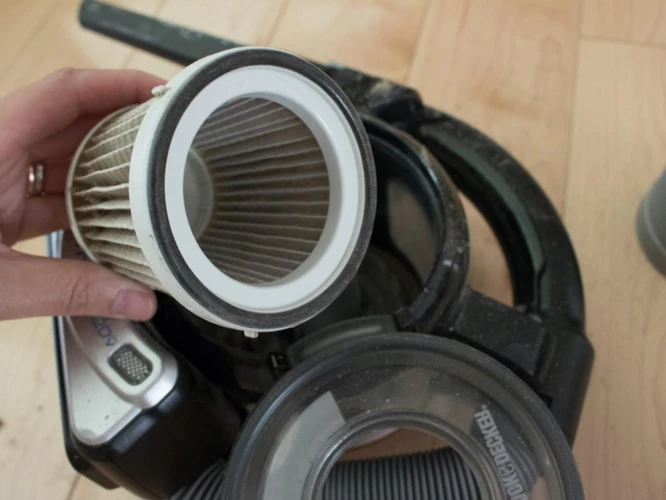
When it comes to smart vacuum cleaners, one of the most important components that should be regularly replaced is the filter. Filters play a vital role in maintaining the cleanliness of the air in your home, as well as ensuring the longevity and optimal performance of your device. Understanding the different types of filters available for smart vacuum cleaners is crucial. From HEPA filters to pre-filters and post-filters, each serves a specific purpose in trapping dust, dirt, and other pollutants. Let’s take a closer look at the types of filters available for smart vacuum cleaners and how to choose the right one for your device.
HEPA Filters
HEPA (High-Efficiency Particulate Air) filters are one of the most popular types of filters used in smart vacuum cleaners. These filters are made with a unique mesh of randomly arranged fibers that effectively trap tiny particles and allergens, making them ideal for households with pets, children, or people with allergies.
Benefits of HEPA Filters
- HEPA filters help improve indoor air quality by capturing up to 99.97% of dust, pet dander, pollen, and other allergens that are as small as 0.3 microns in size. This means that they can trap most of the harmful particles floating around in the air and prevent them from entering your lungs.
- HEPA filters can also help reduce the spread of viruses, bacteria, and other microorganisms that often reside in household dust. This can be especially beneficial for people with weakened immune systems or chronic respiratory conditions.
- By removing dust and allergens from your home, HEPA filters can help reduce the symptoms of allergies and asthma. This means that you and your family can breathe more easily and feel more comfortable in your own home.
- HEPA filters can also prolong the life of your vacuum cleaner’s motor by reducing the amount of dust and debris it has to suck up. This can save you money on repairs or replacements down the line.
How to Replace HEPA Filters
Replacing HEPA filters in your smart vacuum cleaner is a straightforward process that generally involves opening the vacuum’s dustbin or filter compartment, removing the old filter, and inserting a new one. However, it’s important to refer to your vacuum cleaner’s user manual for specific instructions.
Pro Tips for HEPA Filter Replacement
- Always choose the correct replacement filter for your model of smart vacuum cleaner. Using the wrong filter can affect the vacuum’s efficiency and motor.
- Check the vacuum’s filter regularly and replace it when necessary. Waiting too long can cause the filter to become clogged, which can reduce the vacuum’s suction power and affect its overall performance.
- If you’re unsure about when to replace the HEPA filter, refer to the manufacturer’s recommendations or consult with a professional.
- When replacing the filter, make sure you handle it carefully and dispose of it properly to minimize the risk of dust and allergens spreading throughout the room.
Conclusion
HEPA filters are an essential component of smart vacuum cleaners and can help improve indoor air quality, reduce allergens and microorganisms, and prolong the life of the vacuum’s motor. Replacing HEPA filters regularly and following pro tips can ensure optimal performance from your smart vacuum cleaner and a cleaner air quality in your home.
Pre-Filters
Pre-filters are an essential component of smart vacuum cleaners, which help in capturing large debris and dust particles before they reach the primary filter. These filters act as the first line of defense in maintaining air quality in your home, preventing clogs, and extending the life of your primary filter.
There are various types of pre-filters that you can find in smart vacuum cleaners, but two of the most common types include foam and felt filters.
Foam Pre-Filters: These filters are washable and reusable. They can be made up of foam or sponge-like material that trap larger-sized debris and dust particles while allowing smaller particles to pass through. Typically, manufacturers recommend washing these filters after every use and replacing them every six months to a year depending on usage.
Felt Pre-Filters: These filters are made of synthetic and absorbent materials that help in trapping dirt, dust, and hair. They have a finer mesh than foam filters and can trap smaller particles. Felt filters are not reusable and should be replaced every three to six months depending on usage.
It’s crucial to ensure that pre-filters are cleaned and replaced on a regular basis. Failure to do so can lead to a decreased performance of your smart vacuum cleaner, as debris and dust will start clogging up the filters. This clogging can cause motor damage and reduce suction power, ultimately leading to costly repairs.
Below is a table summarizing the main differences between foam and felt pre-filters in smart vacuum cleaners:
| Pre-Filter Type | Material | Capture Capabilities | Usage |
|---|---|---|---|
| Foam Pre-Filter | Foam/Sponge Material | Traps Larger Debris and Dust Particles | Wash After Every Use, Replace Every 6-12 Months Depending on Usage |
| Felt Pre-Filter | Synthetic Material | Traps Dirt, Dust and Hair | Replace Every 3-6 Months Depending on Usage |
Regularly cleaning and replacing pre-filters in your smart vacuum cleaners is critical to maintaining optimal performance, ensuring longevity, and improving indoor air quality. It’s important to follow manufacturer guidelines on filter replacement frequency and to monitor usage to ensure your vacuum cleaner keeps working efficiently.
Post-Filters
Post-filters are the final line of defense in a smart vacuum cleaner’s filtration system. Their purpose is to capture any particles that weren’t caught by the pre-filter or HEPA filter. Post-filters are typically made of foam, felt, or fabric materials that trap even the tiniest particles of dust, dirt, and allergens.
Pros:
- Trap microscopic particles
- Extend the life of HEPA filters
- Improve air quality
Cons:
- May need frequent cleaning or replacement
- Can negatively impact suction power if not maintained properly
Some smart vacuum cleaners have replaceable post-filters, while others require periodic cleaning. To maintain the efficiency of post-filters, it’s important to follow the manufacturer’s recommendations. Typically, post-filters need to be cleaned or replaced every few months, depending on the frequency of use.
Cleaning a post-filter is simple and straightforward. First, remove the filter from the smart vacuum cleaner. Then, use a soft-bristled brush to sweep off loose particles on the surface of the filter. Next, rinse the filter under cold water and gently squeeze out any excess water. Allow the filter to air dry completely before reinserting it into the smart vacuum cleaner.
If the post-filter is too dirty or damaged, it’s time to replace it. Refer to the manufacturer’s instructions to identify the compatible replacement filter for the smart vacuum cleaner model.
Tip: To extend the lifespan of post-filters, it’s recommended to clean or replace them regularly. This not only ensures optimal vacuuming performance but also improves indoor air quality by minimizing the release of particles back into the air.
How to Replace Filters in Smart Vacuum Cleaners?
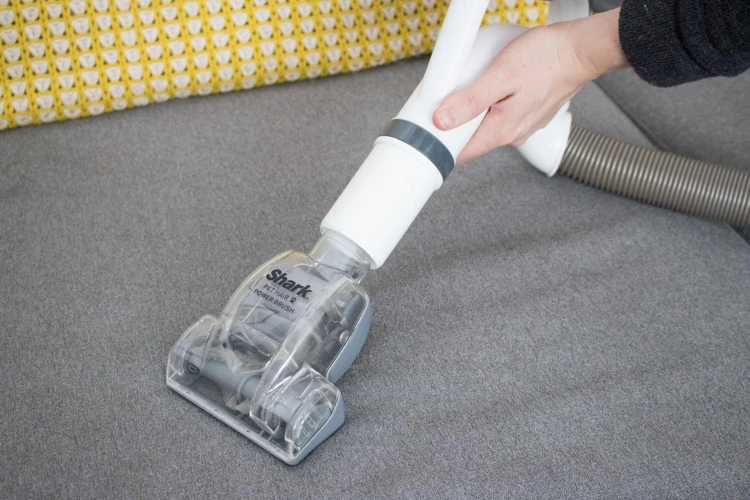
Are you unsure of how to replace the filters in your smart vacuum cleaner? Don’t worry, it’s a simple process that can greatly improve the efficiency and lifespan of your device. With just a few easy steps, you can ensure that your vacuum is operating at its best, and your indoor air quality is at its highest. In this section, we will walk you through the process of filter replacement and provide pro tips for efficient and effective maintenance. So, let’s get started!
Step-by-step Guide to Replacing Filters
When it comes to replacing filters in your smart vacuum cleaner, it’s essential that you follow the correct steps to ensure that you don’t damage your appliance or hinder its performance. Here is a step-by-step guide to help you replace your smart vacuum cleaner filters with ease:
- Identify the correct filter: The first step is to ensure that you have identified the correct filter that needs to be replaced. Your smart vacuum cleaner may have multiple filters, so it’s important to identify the one that needs to be replaced.
- Turn off and unplug the vacuum cleaner: Before you begin replacing the filter, make sure the vacuum cleaner is turned off and unplugged to avoid any accidents.
- Remove the filter: The next step is to remove the old filter from your smart vacuum cleaner. Depending on the model, the filter may be located in different areas of the vacuum cleaner. The manual that came with your appliance should have instructions on where to find it.
- Clean the filter housing: After you’ve removed the old filter, take the time to clean the filter housing. You can use a soft cloth or a small brush to remove any dust or debris that may have accumulated in the area.
- Install the new filter: Once the housing is clean, you can install the new filter into your smart vacuum cleaner. Make sure it’s securely in place before moving on to the next step.
- Reset the filter indicator: If your vacuum cleaner has a filter indicator, make sure you reset it to reflect that you’ve installed a new filter. This is important because it will remind you when it’s time to replace the filter again.
- Turn the vacuum cleaner back on: Finally, after you’ve installed the new filter and reset the filter indicator if applicable, you can turn your smart vacuum cleaner back on to resume use.
By following these steps in the correct order, you can replace your smart vacuum cleaner filters with ease and ensure that your appliance is working at maximum efficiency. Remember to always refer to the manual that came with your smart vacuum cleaner if you have any questions or concerns about replacing filters.
Pro Tips for Efficient Filter Replacement
When it comes to replacing filters in your smart vacuum cleaner, following these pro tips can make the process more efficient and effective:
- Refer to manufacturer’s instructions: Always check your smart vacuum cleaner’s user manual for specific instructions on replacing filters. Different models may have varying filter replacement procedures, and following the manufacturer’s instructions can prevent damage or malfunction of your vacuum cleaner.
- Choose the right filter: Using the right type of filter is important for optimal performance. Make sure you purchase filters that are compatible with your smart vacuum cleaner and are designed for your specific cleaning needs. For example, HEPA filters are recommended for people with allergies or asthma as they can capture small particles such as dust mites and pollen, enhancing indoor air quality.
- Only replace filters when necessary: While regular filter replacement is crucial, replacing filters too frequently can be wasteful and unnecessary. Monitor the filter usage and performance to determine when it needs to be changed. For example, if you notice that suction power has significantly decreased or if there’s a noticeable decrease in air quality, it may be time to replace the filter.
- Clean filters before replacement: Before replacing filters, remove them from the vacuum cleaner and cleaning them thoroughly. Gently tap the filter over a garbage bin to remove any loose dirt or debris, use a soft brush to remove any dirt or debris that’s stuck on the filter. Cleaning them before replacing can extend the filter’s lifespan.
- Properly dispose of used filters: Used filters must be disposed of properly. Many smart vacuum cleaner manufacturers offer instructions on how to dispose of used filters safely, such as through recycling programs. Disposing of used filters improperly can be harmful to the environment and may even result in legal consequences.
By following these pro tips, you can ensure that the filter replacement process is easy, efficient, and safe. Not only will you prolong the life of your smart vacuum cleaner, but you’ll also enhance its performance, save money and improve your living environment.
Benefits of Regular Filter Replacement
You may be wondering, “What’s the big deal about regularly replacing filters in my smart vacuum cleaner?” The truth is, neglecting to replace filters can have negative consequences that impact both your household and wallet. By implementing a regular filter replacement routine, you can experience a variety of benefits that go beyond simply keeping your vacuum running smoothly. Let’s dive into why replacing filters is crucial and how you can reap the rewards of this small but mighty maintenance task.
Optimal Performance and Longevity of Your Smart Vacuum Cleaner
Regularly replacing the filters of your smart vacuum cleaner can have a significant impact on its performance and longevity. Dirty and clogged filters can put a strain on the motor and reduce suction power, leading to inadequate cleaning and even motor damage. Here are some key benefits of replacing filters on a regular basis:
- Efficient cleaning: Clean filters enable your vacuum cleaner to perform optimally by maintaining suction power, allowing it to effectively pick up dirt and debris from carpets, rugs, and hard floors. This ensures a more efficient cleaning process and provides better results, making your home look and feel cleaner.
- Improved motor life: Replacing filters regularly prevents dirt and debris from damaging the motor. Clean filters reduce the strain on your vacuum cleaner’s motor, which can extend its life and save you money in the long run.
- Cost savings: By regularly replacing filters, you can avoid costly repairs and the need for premature replacement of your smart vacuum cleaner. This not only saves you money but also reduces the environmental impact of disposing of a broken vacuum cleaner prematurely.
In addition to these benefits, regularly replacing filters also ensures that your smart vacuum cleaner is operating at its best, providing optimal performance and longevity. With clean filters, you can enjoy cleaner floors and a fresher indoor environment while also ensuring that your smart vacuum cleaner lasts for years to come.
Improved Indoor Air Quality
One of the most important benefits of regularly replacing filters in your smart vacuum cleaner is the improvement in indoor air quality. As we use our vacuum cleaners to rid our homes of unwanted dust, dirt, and allergens, it’s important to ensure that the same particles aren’t being circulated back into the air we breathe.
Airborne particles can have a significant impact on our health, triggering allergies and respiratory issues. This is especially true for those who have asthma or other breathing complications. By regularly replacing filters, you can help reduce the concentration of these particles in the air and improve your home’s overall air quality.
Here are some common airborne particles that filters in your smart vacuum cleaner can help trap:
- Pollen: A common allergen that causes symptoms such as sneezing, itchy eyes, and nasal congestion.
- Dust Mites: Microscopic bugs that feed on the dead skin cells of humans and animals. They can cause allergies and asthma symptoms.
- Pet Dander: Tiny flecks of skin shed by cats, dogs, and other animals that can trigger allergic reactions in sensitive individuals.
- Mold Spores: Small reproductive structures produced by mold that can grow in damp areas such as bathrooms or basements. Exposure to mold can cause respiratory issues and worsen asthma symptoms.
By making sure your smart vacuum cleaner filters are working effectively, you can help reduce the concentration of these harmful particles in your home’s air. This can lead to a healthier living environment and fewer respiratory issues for you and your family.
Regularly replacing filters is a key step in improving indoor air quality and maintaining a healthy living environment. By doing so, you’ll be able to breathe easy and enjoy a comfortable atmosphere free of airborne irritants.
Cost Savings
Regularly replacing filters in your smart vacuum cleaner not only helps maintain its optimal performance and longevity but also saves you money in the long run. Here are some ways in which filter replacement can lead to cost savings:
- Prevents Premature Motor Damage: When the filters of your smart vacuum cleaner are clogged with dust, dirt, and debris, they can increase the stress on the motor. As a result, the motor may overheat, wear out quickly, and require costly repairs or replacements. By replacing filters according to the manufacturer’s recommendation, you can prevent such motor damage and avoid expensive repairs.
- Reduces the Need for Vacuum Bags: Certain smart vacuum cleaners come with filters that can be washed and reused multiple times. By cleaning these filters and regularly replacing disposable ones, you can reduce the amount of dust and debris that accumulates in the vacuum bag. This not only makes the vacuum more efficient but also extends the lifespan of the bag, reducing the frequency of bag replacements.
- Avoids Damage to Other Parts: When the filters in your smart vacuum cleaner are dirty or damaged, their suction power is compromised. This can cause the vacuum to work harder than it needs to and put undue stress on other components such as the brush roll or belt. By regularly replacing filters, you can ensure that your smart vacuum cleaner is working at optimum efficiency, reducing the risk of damage to other parts and avoiding costly repairs.
By following a regular filter replacement schedule, you can not only improve the air quality in your home and ensure the optimal performance of your smart vacuum cleaner but also save money by avoiding expensive repairs and replacements. So, don’t overlook the importance of filter maintenance in your smart vacuum cleaner and enjoy its benefits for years to come.
Conclusion
In conclusion, it is vital to regularly replace the filters in your smart vacuum cleaner to ensure optimal performance and longevity of the device. Neglecting filter replacement can lead to decreased filtration efficiency, motor damage, and weakened suction power.
By monitoring filter usage and performance, and following the recommended replacement frequency guide, you can maintain the effectiveness of your vacuum cleaner’s filtration system. This will not only keep your home cleaner and healthier by improving indoor air quality, but also save you money in the long run by preventing expensive motor repairs or replacement.
When it comes to filter replacement, it is important to know the different types of filters in smart vacuum cleaners, such as HEPA filters, pre-filters, and post-filters. This knowledge will help you in selecting the right filter replacements and ensure your device’s efficiency.
Replacing filters in smart vacuum cleaners is a simple process, but following a step-by-step guide can ensure that the replacement is done correctly and with ease. By following pro tips for efficient filter replacement, you can make the process even more straightforward.
In conclusion, regular filter replacement is beneficial for both your smart vacuum cleaner and your home. It ensures optimal performance, efficiency, and longevity, leading to cost savings in the long run, improved indoor air quality, and a cleaner and healthier home. So, don’t hesitate to prioritize the replacement of your smart vacuum cleaner’s filters and maintain its quality and effectiveness.
Frequently Asked Questions
How often should I replace the filters in my smart vacuum cleaner?
It depends on the frequency of use and the type of filter, but typically every 3-6 months.
What happens if I don’t replace the filters?
The efficiency of the vacuum cleaner’s filtration system will decrease, leading to poor suction power and increased strain on the motor, which can lead to damage over time.
What are HEPA filters?
HEPA (High-Efficiency Particulate Air) filters are designed to capture small particles and allergens, making them ideal for improving indoor air quality.
What are pre-filters?
Pre-filters capture larger debris and protect the HEPA filter from clogging too quickly.
What are post-filters?
Post-filters capture any remaining particles that may have bypassed the HEPA filter.
How do I know if my filter needs to be replaced?
You may notice a decrease in suction power, increased noise, or the vacuum may indicate that the filter needs to be changed. It’s also a good idea to check the filter periodically for any visible signs of wear or clogging.
Can I clean and reuse the filters?
Some filters may be washable and reusable, but it’s best to consult the manufacturer’s recommendations to ensure proper care and usage.
How do I replace the filters in my vacuum cleaner?
Refer to your vacuum cleaner’s user manual for specific instructions, but generally, you’ll need to locate the filter compartment, remove the old filter, and replace it with the new one. Make sure to follow any additional steps for securing the filter in place.
Can I use any brand of replacement filters?
It’s best to use filters recommended by the manufacturer to ensure proper fit and filtration efficiency. Using non-recommended filters may also void your warranty.
What benefits do I get from regularly replacing the filters?
You’ll enjoy better indoor air quality, improved suction power, and longer-lasting performance from your smart vacuum cleaner. Regular filter replacement can also save you money by preventing costly motor damage or premature replacement of the entire vacuum cleaner.

